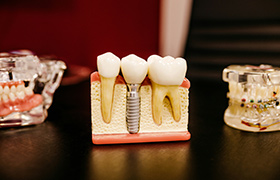Tooth extraction guide from our dentist
When many people picture dental extractions, they instantly envision a person having bad teeth which have succumbed to decay and they may even picture somebody who has a dental abscess.
And while these are common reasons for patients to have a dental extraction, they are far from the only ones. Many patients who are undertaking orthodontic treatment require the extraction of teeth to make room for the movement that their braces will encourage and in some cases, such as wisdom teeth, they simply need to be removed due to impaction or issues and pressures that they are causing within the jaw.
Either way, if you need a tooth extracted, come to us!
Our team at Walkerston Dental always try to make dental extractions as straightforward and as comfortable as possible. This is helped by our dentist Walkerston having access to the most up-to-date technology and being trained in the most recent methods surrounding comfortable dental extraction.
So before you panic about having to have a tooth removed, it may be wise to learn a bit more about the different types of extraction that our dentist Walkerston can offer and how to care for your mouth after you have had an extraction performed. So read on to learn more!
Simple extraction
A simple dental extraction is, well, simple!
Our dentist Walkerston typically performs simple extractions if a patient requires a tooth to be removed due to orthodontic treatment. It presumes that the tooth being removed is healthy and will not crumble or crack when pressure is applied to it.
For a simple dental extraction, all that is required is a general anaesthetic around the area of the tooth and the gum and then the use of some specialised tools to remove the tooth from the jaw. Once the extraction is complete, our team may use stitches to conceal the hole and promote healing, or, we may decide to leave it open.
Surgical extraction
Surgical dental extractions can be a bit more complex.
It is typical if a patient has a tooth that is decayed below the gum line, if they have a severely decayed tooth in general, or if they require a surgical technique to remove the tooth that is in a bad position, which is common with certain teeth.
Much as before, you will have a general anaesthetic but some surgical incisions will need to be made into the gums to get access to the tooth, alongside some X-rays to ensure that we removed all of the tooth so that none is retained.
After a surgical extraction, our team will always apply stitches.
Wisdom teeth
If you have problematic wisdom teeth that are causing tightness, discomfort, or are infected (depending on if they are impacted or not), our team will usually use a surgical extraction to remove them. This may cause swelling to the face and underneath the jaw but we will aim to make any wisdom tooth removal as comfortable as possible and reduce trauma to the jaw.
Aftercare
When you’ve had a tooth extracted, you will want to keep the site clean using saltwater and avoid putting pressure on it until the site has healed over.
If you spot the signs of infection, such as bad breath, discomfort, swelling or the presence of pus, please contact our team urgently for a same-day appointment.
DISCLAIMER
All treatment carries risks. Individual consultation is required with one of our practitioners to ensure that the treatment is right for you.





